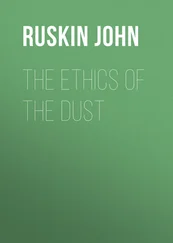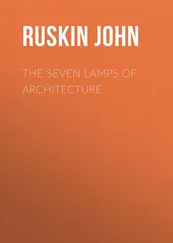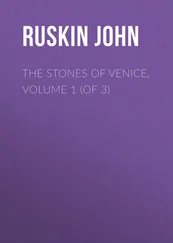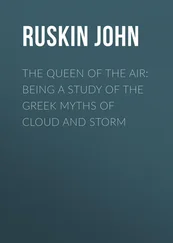John Ruskin - The Poetry of Architecture
Здесь есть возможность читать онлайн «John Ruskin - The Poetry of Architecture» — ознакомительный отрывок электронной книги совершенно бесплатно, а после прочтения отрывка купить полную версию. В некоторых случаях можно слушать аудио, скачать через торрент в формате fb2 и присутствует краткое содержание. Жанр: foreign_antique, foreign_home, literature_19, visual_arts, на английском языке. Описание произведения, (предисловие) а так же отзывы посетителей доступны на портале библиотеки ЛибКат.
- Название:The Poetry of Architecture
- Автор:
- Жанр:
- Год:неизвестен
- ISBN:нет данных
- Рейтинг книги:5 / 5. Голосов: 1
-
Избранное:Добавить в избранное
- Отзывы:
-
Ваша оценка:
- 100
- 1
- 2
- 3
- 4
- 5
The Poetry of Architecture: краткое содержание, описание и аннотация
Предлагаем к чтению аннотацию, описание, краткое содержание или предисловие (зависит от того, что написал сам автор книги «The Poetry of Architecture»). Если вы не нашли необходимую информацию о книге — напишите в комментариях, мы постараемся отыскать её.
The Poetry of Architecture — читать онлайн ознакомительный отрывок
Ниже представлен текст книги, разбитый по страницам. Система сохранения места последней прочитанной страницы, позволяет с удобством читать онлайн бесплатно книгу «The Poetry of Architecture», без необходимости каждый раз заново искать на чём Вы остановились. Поставьте закладку, и сможете в любой момент перейти на страницу, на которой закончили чтение.
Интервал:
Закладка:
52. The door is flanked and roofed by three large oblong sheets of gray rock, whose form seems not to be considered of the slightest consequence. Those which form the cheeks of the windows are generally selected with more care from the débris of some rock, which is naturally smooth and polished, after being subjected to the weather, such as granite or syenite. The window itself is narrow and deep set; in the better sort of cottages, latticed, but with no affectation of sweetbrier or eglantine about it. It may be observed of the whole of the cottage, that, though all is beautiful, nothing is pretty. The roof is rather flat, and covered with heavy fragments of the stone of which the walls are built, originally very loose; but generally cemented by accumulated soil, and bound together by houseleek, moss, and stonecrop: brilliant in color, and singular in abundance. The form of the larger cottages, being frequently that of a cross, would hurt the eye by the sharp angles of the roof, were it not for the cushion-like vegetation with which they are rounded and concealed. Varieties of the fern sometimes relieve the massy forms of the stonecrop, with their light and delicate leafage. Windows in the roof are seldom met with. Of the chimney I shall speak hereafter.
53. Such are the prevailing peculiarities of the Westmoreland cottage. "Is this all?" some one will exclaim: "a hovel, built of what first comes to hand, and in the most simple and convenient form; not one thought of architectural beauty ever coming into the builder's head!" Even so; to this illustration of an excellent rule, I wished particularly to direct attention: that the material which Nature furnishes, in any given country, and the form which she suggests, will always render the building the most beautiful, because the most appropriate. Observe how perfectly this cottage fulfills the conditions which were before ascertained to be necessary to perfection. Its color is that of the ground on which it stands, always subdued and gray, but exquisitely rich, the color being disposed crumblingly, in groups of shadowy spots; a deep red brown, passing into black, being finely contrasted with the pale yellow of the Lichen geographicus , and the subdued white of another lichen, whose name I do not know; all mingling with each other as on a native rock, and with the same beautiful effect: the mass, consequently, at a distance, tells only as a large stone would, the simplicity of its form contributing still farther to render it inconspicuous. When placed on a mountain-side such a cottage will become a point of interest, which will relieve its monotony, but will never cut the hill in two, or take away from its size. In the valley, the color of these cottages agrees with everything: the green light, which trembles through the leafage of the taller trees, falls with exquisite effect on the rich gray of the ancient roofs: the deep pool of clear water is not startled from its peace by their reflection; the ivy, or the creepers to which the superior wealth of the peasant of the valley does now and then pretend, in opposition to the general custom, cling gracefully and easily to its innumerable crevices; and rock, lake, and meadow seem to hail it with a brotherly affection, as if Nature had taken as much pains with it as she has with them.
54. Again, observe its ease of outline. There is not a single straight line to be met with from foundation to roof; all is bending or broken. The form of every stone in its walls is a study; for, owing to the infinite delicacy of structure in all minerals, a piece of stone 3 in. in diameter, irregularly fractured, and a little worn by the weather, has precisely the same character of outline which we should find and admire in a mountain of the same material 6000 ft. high; 9and, therefore, the eye, though not feeling the cause, rests on every cranny, and crack, and fissure with delight. It is true that we have no idea that every small projection, if of chert, has such an outline as Scawfell's; if of gray-wacke, as Skiddaw's; or if of slate, as Helvellyn's; but their combinations of form are, nevertheless, felt to be exquisite, and we dwell upon every bend of the rough roof and every hollow of the loose wall, feeling it to be a design which no architect on earth could ever equal, sculptured by a chisel of unimaginable delicacy, and finished to a degree of perfection, which is unnoticed only because it is everywhere.
55. This ease and irregularity is peculiarly delightful where gracefulness and freedom of outline and detail are, as they always are in mountain countries, the chief characteristics of every scene. It is well that, where every plant is wild and every torrent free, every field irregular in its form, every knoll various in its outline, one is not startled by well built walls, or unyielding roofs, but is permitted to trace in the stones of the peasant's dwelling, as in the crags of the mountain side, no evidence of the line or the mallet, but the operation of eternal influences, the presence of an Almighty hand. Another perfection connected with its ease of outline is, its severity of character: there is no foppery about it; not the slightest effort at any kind of ornament, but what nature chooses to bestow; it wears all its decorations wildly, covering its nakedness, not with what the peasant may plant, but with what the winds may bring. There is no gay color or neatness about it; no green shutters or other abomination: all is calm and quiet, and severe, as the mind of a philosopher, and, withal, a little somber. It is evidently old, and has stood many trials in its day; and the snow, and the tempest, and the torrent have all spared it, and left it in its peace, with its gray head unbowed, and its early strength unbroken, even though the spirit of decay seems creeping, like the moss and the lichen, through the darkness of its crannies. This venerable and slightly melancholy character is the very soul of all its beauty.
56. There remains only one point to be noticed, its humility. This was before stated to be desirable, and it will here be found in perfection. The building draws as little attention upon itself as possible; since, with all the praise I have bestowed upon it, it possesses not one point of beauty in which it is not equaled or excelled by every stone at the side of the road. It is small in size, simple in form, subdued in tone, easily concealed or overshadowed; often actually so; and one is always delighted and surprised to find that what courts attention so little is capable of sustaining it so well. Yet it has no appearance of weakness: it is stoutly, though rudely, built; and one ceases to fear for its sake the violence of surrounding agencies, which, it may be seen, will be partly deprecated by its humility.
57. Such is the mountain cottage of Westmoreland; and such, with occasional varieties, are many of the mountain cottages of England and Wales. It is true that my memory rests with peculiar pleasure in a certain quiet valley near Kirkstone, little known to the general tourist, distant from any public track, and, therefore, free from all the horrors of improvement: 10in which it seemed to me that the architecture of the cottage had attained a peculiar degree of perfection. But I think that this impression was rather produced by a few seemingly insignificant accompanying circumstances, than by any distinguished beauty of design in the cottages themselves. Their inhabitants were evidently poor, and apparently had not repaired their dwellings since their first erection; and, certainly, had never torn one tuft of moss or fern from roofs or walls, which were green with the rich vegetation of years. The valley was narrow, and quiet, and deep, and shaded by reverend trees, among whose trunks the gray cottages looked out, with a perfection of effect which I never remember to have seen equaled, though I believe that, in many of the mountain districts of Britain, the peasant's domicile is erected with equal good taste.
Читать дальшеИнтервал:
Закладка:
Похожие книги на «The Poetry of Architecture»
Представляем Вашему вниманию похожие книги на «The Poetry of Architecture» списком для выбора. Мы отобрали схожую по названию и смыслу литературу в надежде предоставить читателям больше вариантов отыскать новые, интересные, ещё непрочитанные произведения.
Обсуждение, отзывы о книге «The Poetry of Architecture» и просто собственные мнения читателей. Оставьте ваши комментарии, напишите, что Вы думаете о произведении, его смысле или главных героях. Укажите что конкретно понравилось, а что нет, и почему Вы так считаете.












